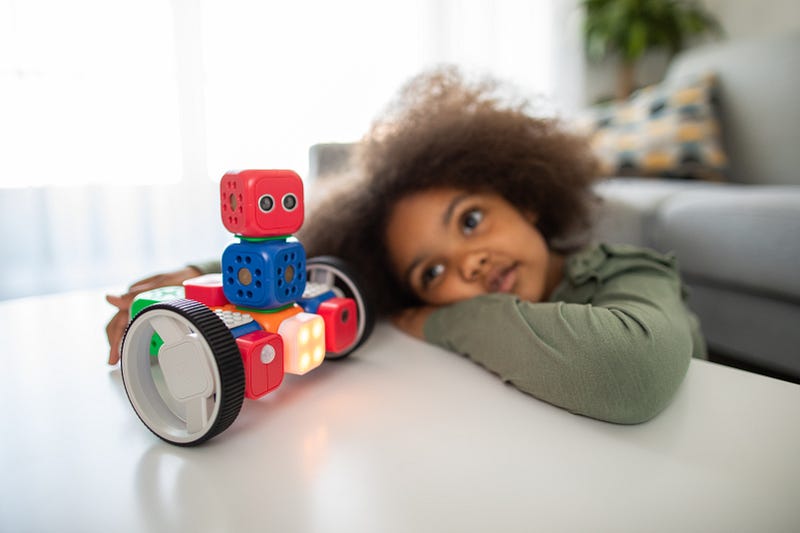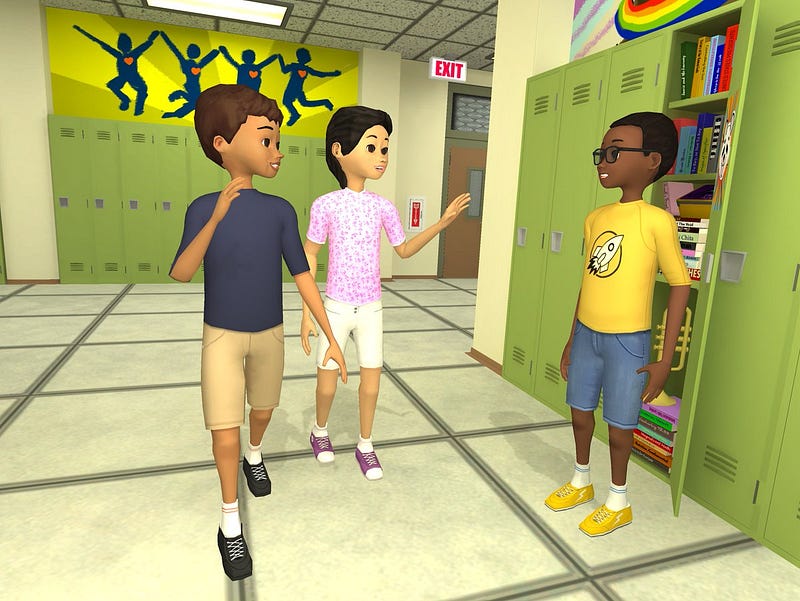# Transformative Impact of Virtual Reality on Autism Therapy
Written on
Chapter 1: Understanding Neurodiversity
Neurodiversity recognizes that human brains operate uniquely from one individual to another. While it was once perceived as a disorder, these differences in brain function are now acknowledged as normal variations. Neurodiverse brains process learning, emotions, attention, and social interactions differently compared to neurotypical brains. Autism spectrum disorder (ASD) is an essential component of this neurodiversity spectrum.
According to the CDC, approximately 1 in 44 children, or 2.3%, are diagnosed with autism. Each individual's developmental challenges may vary, but common issues include difficulties with social interaction, emotional regulation, and communication. Although early intervention can foster better developmental outcomes, autistic children often encounter distinct challenges throughout their lives.
Anxiety affects up to 84% of individuals with autism, manifesting as social phobias, rigid routines, and sometimes self-harm. Furthermore, about 30% of those on the spectrum may struggle with verbal communication, leading to misconceptions about their intelligence and emotional capacity. Bullying remains a significant risk, with studies indicating that 63% of autistic children aged 6–15 have experienced bullying, particularly among those yearning for social connections yet finding it hard to make friends. Employment opportunities are often limited, resulting in around 80% of autistic individuals being either unemployed or underemployed due to misunderstandings about their unique requirements in the workplace.

Chapter 2: The Role of Technology in Autism
Autism itself isn't the challenge; rather, it's the societal barriers faced by neurodivergent individuals. Fortunately, advancements in technology are beginning to address these challenges. Traditional therapies for autism, while beneficial, often fall short in meeting the diverse needs of autistic individuals. The integration of virtual reality (VR) into therapeutic practices offers a promising solution.
Using Virtual Reality to Help Kids with Autism | Freethink Superhuman - YouTube
This video showcases how virtual reality is being utilized in therapeutic settings to assist children with autism in developing essential skills.
Section 2.1: Safe Learning Environments
Navigating everyday activities, like crossing the street, can be daunting for individuals with autism. While the benefits of mastering such skills are significant, the risks involved are substantial. It is ethically inappropriate to expose autistic individuals to dangerous situations for the sake of learning. VR provides a safe space for individuals to practice navigating potentially hazardous scenarios, such as driving or interacting with law enforcement, without real-world consequences. This safe environment encourages exploration, mistake-making, and learning.
Virtual reality as an assistive technology for autism - YouTube
This video discusses how VR serves as an assistive technology for individuals with autism, emphasizing safety and skill-building.
Section 2.2: Enhancing Access to Therapy
The COVID-19 pandemic drastically altered therapy delivery methods, with telehealth becoming a preferred option. While convenient, telehealth poses challenges for autistic children, as their therapy often requires hands-on interaction with toys and objects, which is difficult to achieve remotely. VR bridges this gap by creating digital environments that closely resemble real-life scenarios, keeping individuals engaged and making therapy more effective and enjoyable.
Section 2.3: Customizing Experiences
Individuals with autism often have specific sensory requirements, including sensitivities to certain sounds, lights, or environmental changes. VR allows for the customization of digital environments to cater to these unique needs. Unlike the physical world, where modifications can be limited, VR can be adjusted to create a comfortable experience for neurodivergent individuals. For instance, auditory or visual stimuli can be fine-tuned, and the difficulty of tasks can be adapted based on the individual's comfort level.
Chapter 3: Innovative Programs and Their Impact
Vijay Ravindran, a former software engineer, co-founded Floreotech after learning that his three-year-old son was diagnosed with autism. The platform focuses on teaching social, behavioral, communication, and life skills to neurodiverse individuals through 175 research-based lessons that are both engaging and educational.
One notable program is the Floreo Police Safety Module (PSM), which uses immersive VR to prepare individuals with autism for interactions with law enforcement. Given that 1 in 5 young adults on the spectrum will encounter police questioning by age 21, this training is crucial. The program teaches essential skills such as maintaining visible hands, making eye contact, and following instructions.

Another effective program, Charisma™, offers virtual social coaching. Aiden, an autistic participant in the Charisma™ for Youth program, experienced significant improvement after just ten hours of training. His mother noted the absence of incident reports from school, highlighting the program's efficacy. Research shows that participants have improved in understanding perspectives, initiating conversations, and recognizing emotions, leading to stronger relationships.

Chapter 4: The Future of Virtual Reality in Autism Treatment
Virtual reality is transforming the treatment landscape for various disorders, including autism. As technology continues to evolve, it holds great promise for enhancing the lives of neurodiverse individuals and addressing the unique challenges they face.